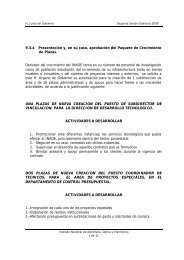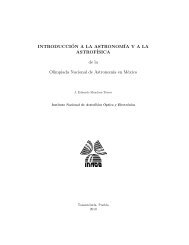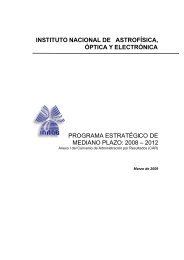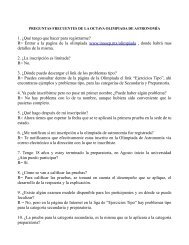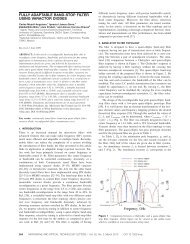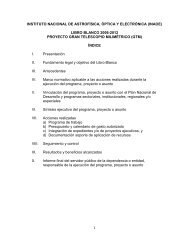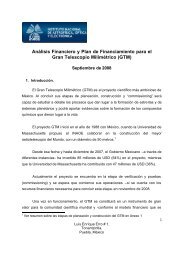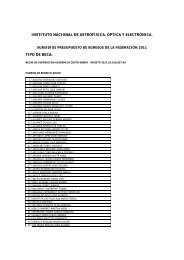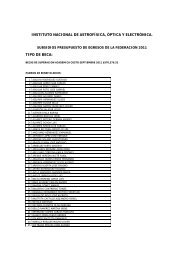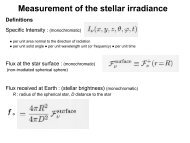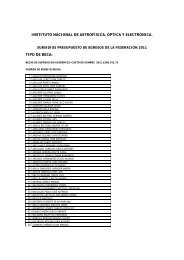Telescope Optical Design - inaoe
Telescope Optical Design - inaoe
Telescope Optical Design - inaoe
You also want an ePaper? Increase the reach of your titles
YUMPU automatically turns print PDFs into web optimized ePapers that Google loves.
Infrared emission<br />
Mauna Kea atmospheric transmission compared to the emissivity of a 2% emissive telescope for 2-<br />
mm of water vapour. Note how a mid-IR instrument is limited by the telescope emisivity over a<br />
significant part of the 10 micron window. Image: University of Florida Astronomy Group.<br />
Diciembre 27, 2007<br />
Astronomía Observacional IA-UNAM<br />
• Relative contributions of background light from<br />
the sky (green line) and a perfect telescope (red<br />
line), assuming 2-mm of water vapour and a<br />
telescope 98% reflectivity (an optical telescope<br />
may not pass 80% unless it has recently been<br />
cleaned and 95% is very difficult to attain). By<br />
making the optics as clean and reflective as<br />
possible (telescope mirrors and mirrors inside<br />
CanariCam) the radiation from the atmosphere<br />
can be the deciding factor in many cases, but in<br />
the best parts of the 10-micron window what<br />
limits us is the optical path.<br />
• <strong>Telescope</strong> contribution minimized by making the<br />
structure as light as possible (to "see" minimum of<br />
support structure) and by taking measures to<br />
maintain the mirrors very clean, including segment<br />
removal from the GTC every week to clean them<br />
on a cyclical basis (every six months approx the<br />
entire mirror surface is renewed). Giving the<br />
telescope a gold-coated secondary mirror may<br />
make another improvement in the future, as gold<br />
reflects infrared light very efficiently - much<br />
more so than aluminium or silver. These factors<br />
are beyond the control of CanariCam.<br />
• CanariCam Gold mirrors, each 99% reflective for<br />
infrared light are used. The detector and mirrors<br />
are cooled to below 30K (-245ºC) and a special<br />
shield (a light baffle) cooled to the same<br />
temperature blocks out all light that does not<br />
come from the telescope mirror.<br />
• We can also improve the instrument's sensitivity<br />
significantly by observing in cold and very dry<br />
conditions to reduce the background still further.<br />
By scheduling the most critical observations in<br />
queue observing mode we can take advantage of<br />
the very best conditions in the observatory,<br />
whenever they happen.



